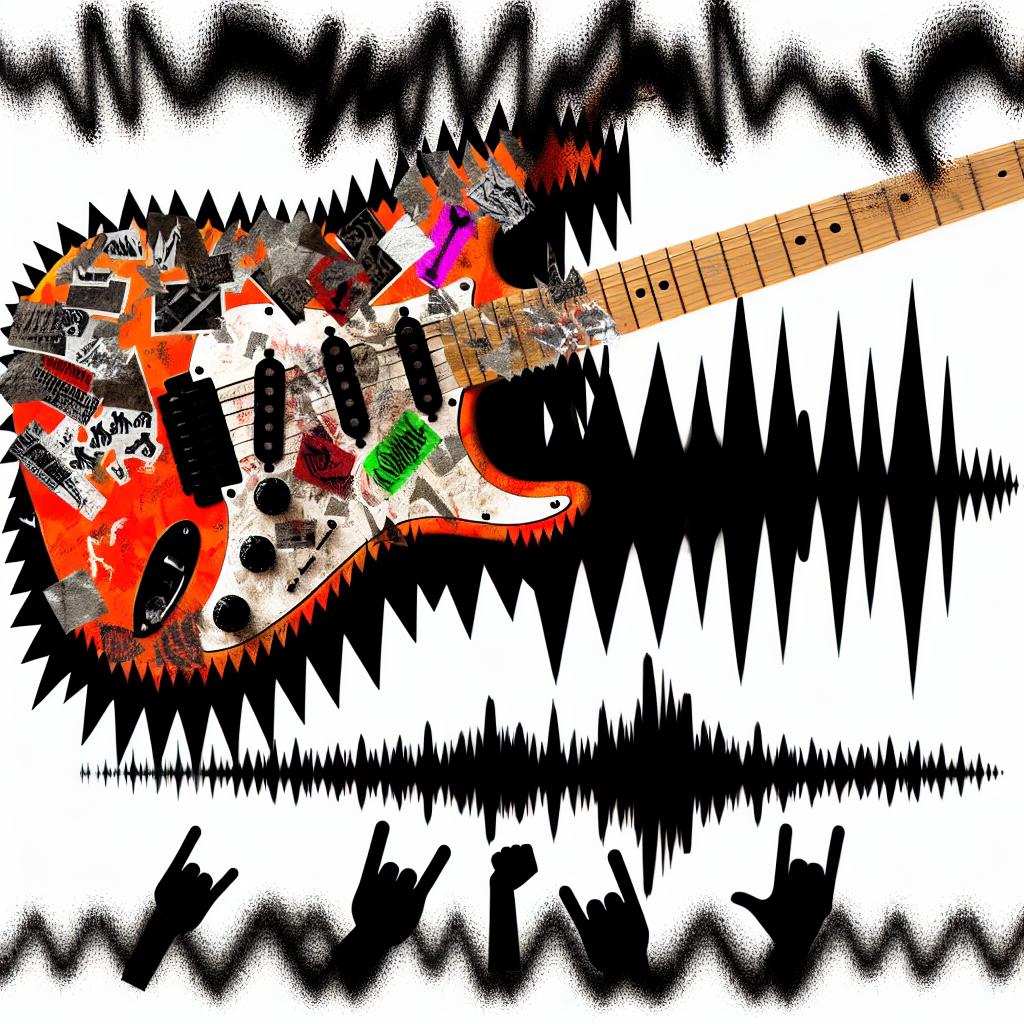The Role of Punk in Shaping Heavy Metal’s Aggressive Sound

The Emergence of Punk and Its Impact on Heavy Metal
The music landscape of the late 1970s was a period of significant transformation. Key to this change was the rise of punk rock, a genre that introduced a fresh, raw energy and simplicity to a scene that had become increasingly dominated by elaborate rock and progressive music. Punk bands such as The Ramones, Sex Pistols, and The Clash emerged with a revolutionary sound that would go on to reshape not only rock but also other genres, including heavy metal.
Characteristics of Punk
Punk rock is defined by its fast tempo, straightforward melodies, and often profoundly political lyrics. Unlike their contemporaries, punk bands eschewed the complexities and sophistication that characterized much of rock music at the time. Instead, they embraced a stripped-down sound that was all about high energy rather than musical complexity. The raw and direct approach of punk served as a strong template for genres that aimed to deliver messages with intensity and urgency.
Punk’s Influence on Heavy Metal’s Musical Style
The influence of punk on heavy metal was particularly evident in the latter’s musical style. Heavy metal, known for its complexity and technical prowess, began to integrate punk’s aggressive sound, notably its speed and simplicity. Metal bands started to adopt quicker tempos and more straightforward song structures, channeling punk’s intensity into their own music. This hybridization of styles was most noticeable in the early 1980s with the emergence of thrash metal, showcasing bands like Metallica and Slayer, who were unmistakably influenced by punk’s raw power.
The Integration of Punk Attitudes
Beyond just the music, punk’s ethos had a profound effect on heavy metal culture. The DIY ethos and anti-establishment attitudes that were so integral to punk also began to permeate the world of heavy metal. Bands started to embrace a more authentic, rebellious image that echoed punk’s disregard for mainstream acceptance. This focus on personal empowerment through music and image resonated well with heavy metal fans, as they found inspiration in both the music and the message.
Crossover Bands and Their Evolution
There were, of course, bands that directly blended punk and heavy metal elements, often referred to as crossover thrash. Bands like Suicidal Tendencies and D.R.I. encapsulated this fusion by integrating punk’s speed and aggression with the heaviness of metal. These bands were instrumental in shaping the evolution of both punk and metal, highlighting the synergy and dynamic results that could arise from merging the two genres.
The contribution of AllMusic in chronicling the development and influence of punk on heavy metal is invaluable. With extensive reviews and artist biographies, this resource details how punk’s explosive entry onto the music scene laid the groundwork for redefining heavy metal’s sound and ethos.
The Socio-cultural Impact
The influence of punk on heavy metal was not confined to musical style alone; it pervaded broader socio-cultural aspects tied to the music. Punk’s emphasis on self-expression and challenging authority figures reshaped metal’s cultural landscape. Metal enthusiasts began to adopt punk’s confrontational stance towards societal norms and the expectations put upon them, which was reflected in the lyrical content of metal music. The abovementioned evolution in ethos and style was essentially not just a revolution in sound, but a revolution in spirit.
Innovation and Experimentation
This newfound spirit also emboldened heavy metal bands to embrace innovation and experimentation. In contrast to the more predictable structures of classic heavy metal, influenced by punk, bands explored more daring and varied musical realms. The impact of punk made metal music more accessible without compromising its intensity. This drive for experimentation facilitated the creation of subgenres that enriched the metal landscape, making it more diverse and dynamic.
Enduring Legacy
The enduring legacy of punk’s influence on heavy metal is evident in the continued existence and popularity of the subgenres that arose from their fusion. Thrash metal, in particular, has shown remarkable staying power and remains a significant part of the metal scene. The adoption of punk characteristics rejuvenated heavy metal and expanded its appeal to wider audiences, ensuring both genres remained vital and relevant across subsequent decades.
Furthermore, the collaborative spirit and cross-pollination between punk and metal catalyzed more cross-genre initiatives within the music industry. The barriers between different musical worlds became less rigid, leading to innovative collaborations and the birth of new, genre-blurring music.
Concluding Thoughts
The intersection between punk and heavy metal marks a pivotal chapter in music history. Punk’s raw energy and unorthodox methods provided heavy metal musicians with new tools for expression, while heavy metal’s technical prowess offered punk artists a platform to intensify their sound. By borrowing elements from one another, these genres not only expanded their horizons but also fortified their cultural presence. Today, as enthusiasts gather at concerts and festivals around the world, the electricity between punk and heavy metal is not just remembered but actively celebrated, a testament to the transformative power of music.